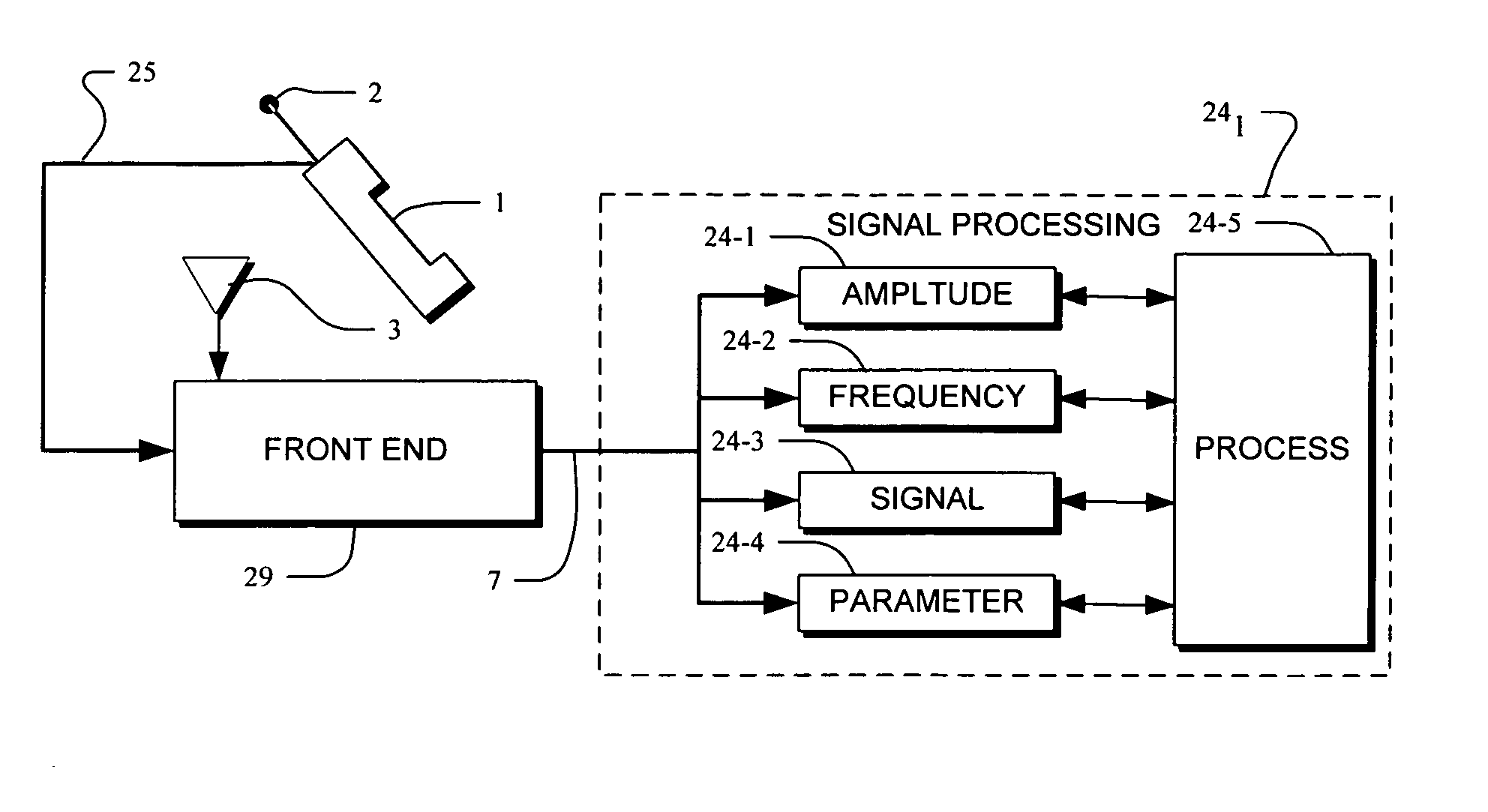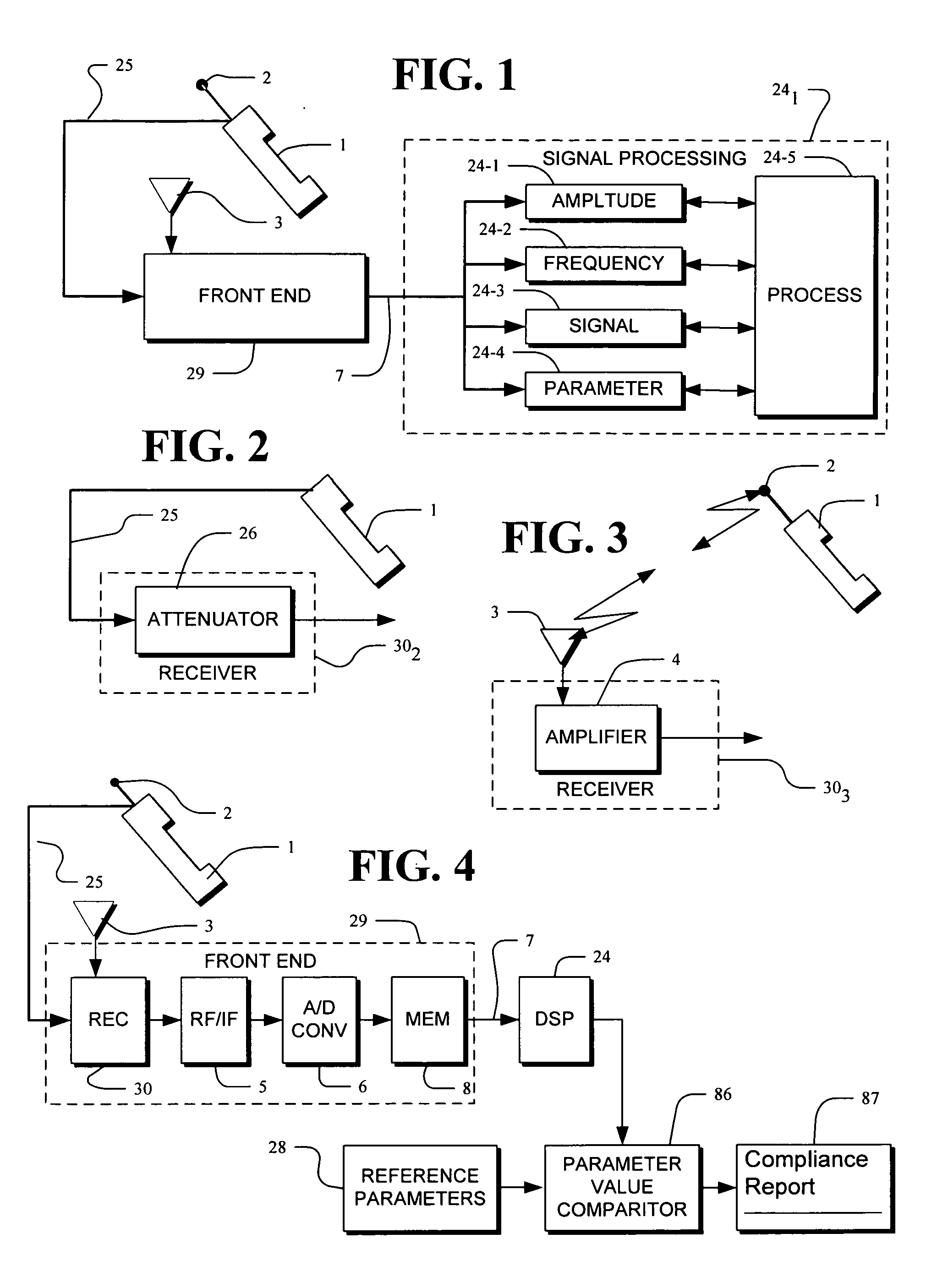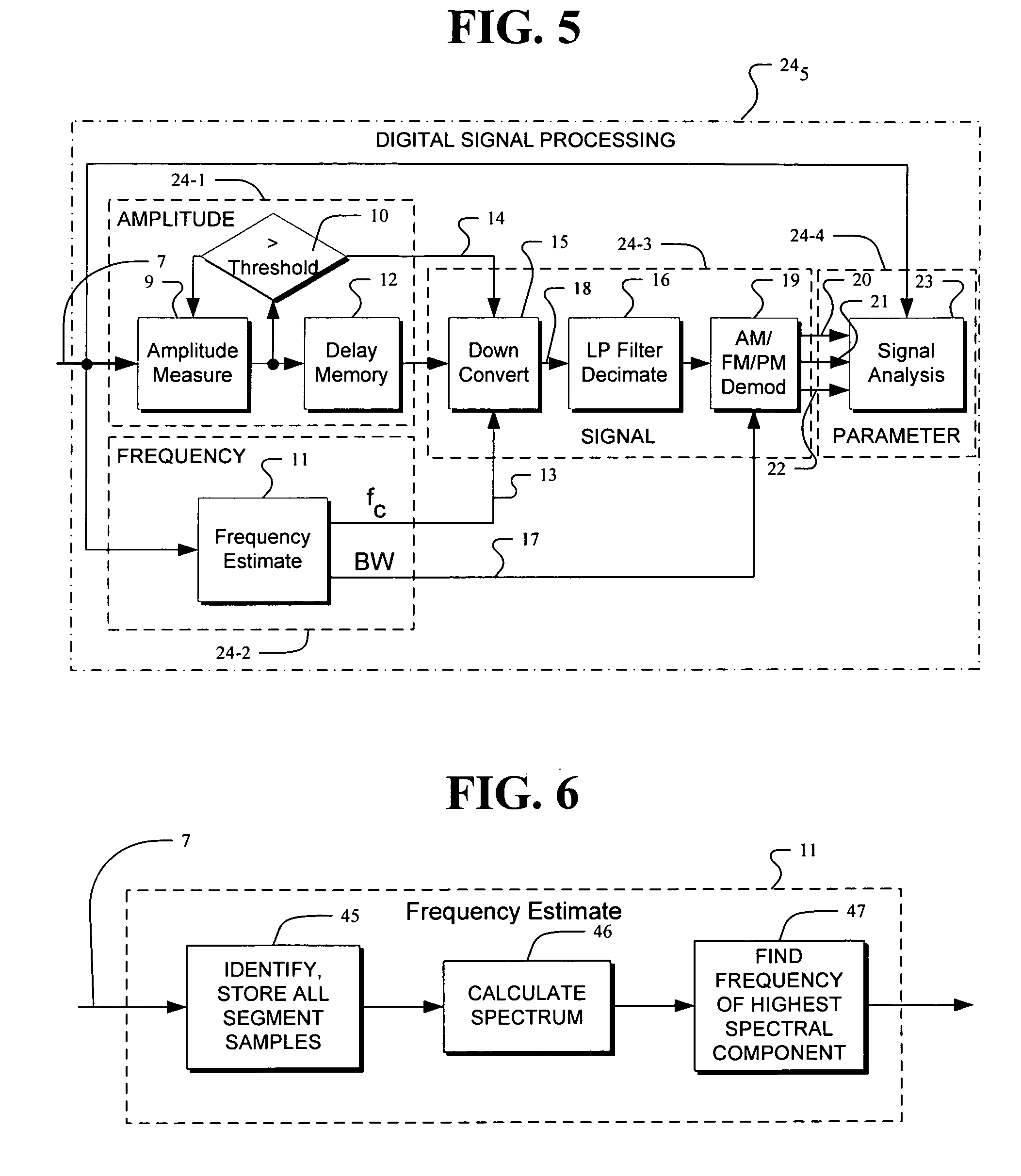Broadband frequency agile signal characterization
a broadband frequency and agile technology, applied in the direction of transmission monitoring, line-transmission, electrical equipment, etc., can solve the problems of difficult characterization of radios and radio wave signals for frequency hopping systems, significant difficulty in interception of frequency hopped signals, and large bandwidth of the whole set of frequencies in the hopping sequen
- Summary
- Abstract
- Description
- Claims
- Application Information
AI Technical Summary
Benefits of technology
Problems solved by technology
Method used
Image
Examples
Embodiment Construction
[0036] In FIG. 1, the radio 1, a device under test, produces a radio frequency input signal which is captured by front end 29 and which is processed by the signal processing components 241. The signal processing components 241 analyze and characterize the input signal from the radio 1. Typically, the radio 1 is a frequency hopping radio that transmits a radio wave signal in segments where each segment is an instance of the signal at one of the hop frequencies of the radio. The broadband analysis performed in FIG. 1 by the signal processing components 241 commences using the AMPLITUDE component 24-1 to determine the start and stop times of each of the segments of the input signal. For each segment identified by the AMPLITUDE component 24-1, the FREQUENCY component 24-2 determines the frequency of the segment. The SIGNAL component 24-3 converts each input segment having an input form to a converted segment having a converted form. The converted form facilitates further processing. An ...
PUM
 Login to View More
Login to View More Abstract
Description
Claims
Application Information
 Login to View More
Login to View More - R&D
- Intellectual Property
- Life Sciences
- Materials
- Tech Scout
- Unparalleled Data Quality
- Higher Quality Content
- 60% Fewer Hallucinations
Browse by: Latest US Patents, China's latest patents, Technical Efficacy Thesaurus, Application Domain, Technology Topic, Popular Technical Reports.
© 2025 PatSnap. All rights reserved.Legal|Privacy policy|Modern Slavery Act Transparency Statement|Sitemap|About US| Contact US: help@patsnap.com



